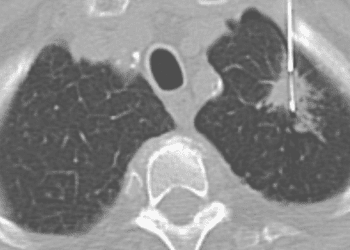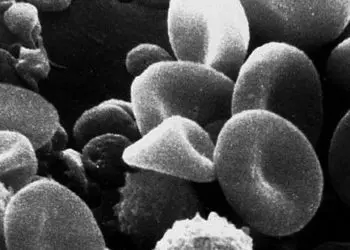2 Minute Medicine Rewind January 20, 2025
Delivering Guideline-Concordant Care for Patients With High-Risk HPV and Normal Cytologic Findings
1. Among female patients with positive human papillomavirus (HPV) test results and negative intraepithelial lesion or malignancy (NILM) findings on cytology, less than half received the surveillance follow-up testing within the timeframe set forth by the 2019 American Society for Colposcopy and Cervical Pathology (ASCCP) guidelines.
Evidence Rating Level: 2 (Good)
The current ASCCP guidelines for patients who receive a positive HPV test result and a normal NILM result recommend 2 consecutive negative annual results to return to routine screening. However, the feasibility of enforcing such guidelines is unclear. This cohort study therefore sought to investigate the adherence to surveillance testing and associated outcomes in patients with positive HPV results and negative NILM findings. 13158 patients (100% female, 24.5% hispanic, 15.1% African American, 5.7% asian, 49.8% non-hispanic white) with an HPV-positive result and NILM-negative result were included from the PROSPR II Cervical Consortium which encompassed three hospital systems in the United States. Patients were assessed at round 1 (16 months after the index result) and if they had an HPV-negative result and NILM-negative result, were eligible to pass onto round 2 (an additional 16 months of surveillance). By the end of round 1, only 43.7% of patients were tested and only 18.2% of total patients (2394) had an HPV-negative result and NILM-negative result and were eligible to pass onto round 2. Groups less likely to test within the guideline-recommended timeframe were younger adults (aged 25-29 compared with 30-39 years: AOR, 0.65; 95% CL, 0.53-0.81), African American or Black patients (compared with White patients: AOR, 0.78; 95% CL, 0.68-0.89), as well as those with Medicaid (compared with commercial insurance: AOR, 0.81; 95% CL, 0.72-0.91). Among patients who were untested in round 1, 10 were found to have cancer and 54 had in situ cancer. Overall, this study found that among patients with an HPV-positive result and NILM-negative result, less than half received the recommended surveillance set forth by the 2019 ASCCP guidelines.
Esophageal Candida Infection and Esophageal Cancer Risk in Patients With Achalasia
1. Among 234 patients with achalasia, esophageal candidiasis was identified in 12%.
2. Among patients with achalasia, prior esophageal candidiasis, older age at diagnosis and male sex were associated with an increased risk of developing esophageal cancer (EC).
Evidence Rating Level: 2 (Good)
Patients with achalasia are at higher risk of developing EC. However, the specific pathophysiological mechanism underlying this phenomenon has not been well established. A recent hypothesis posits that food stasis promotes the overgrowth of microorganisms like bacteria and some fungal species which can cause chronic inflammation leading to dysplasia of the esophageal mucosa. This retrospective cohort study therefore sought to investigate the prevalence of esophageal Candida infection in patients with achalasia and to evaluate its association with the development of EC. 234 patients (median [IQR] age at diagnosis, 45 [32-63] years; 50% female) with achalasia at the Erasmus University Medical Centre between January 1980 and May 2024 were included in the study. During follow-up, 29 patients (12%) experienced at least 1 episode of esophageal candidiasis while 24 patients (10%) experienced EC. Using Cox proportional hazards regression models with esophageal candidiasis as a time-varying covariate, Candida infection was associated with an increased risk of developing EC (crude univariate HR, 10.44 [95% CI, 3.78-28.83]; P < .001). Overall, this study found that the prevalence of esophageal Candida infection in patients with achalasia was 12%, and that esophageal candidiasis was associated with a higher risk of developing EC.
1. Overall, the use of 5-aminosalicylic acid (5-ASA) in combination with ustekinumab (UST) did not provide a significant benefit in patients with inflammatory bowel disease (IBD).
Evidence Rating Level: 2 (Good)
UST, a monoclonal antibody targeting interleukin-12/23, is a newer therapeutic option available to individuals living with Crohn’s disease (CD) or ulcerative colitis (UC). However, the efficacy of UST in combination with 5-ASAs for patients living with IBD has not been well characterized. This retrospective cohort study therefore sought to investigate the impact of concomitant UST and 5-ASA for the management of patients with CD or UC. 1971 patients (median age [IQR], 40.0 [29.0-50.0]; 65.5% female) rom the Medical Data Vision database of healthcare claims in Japan were included in the study. The primary outcome of the study was UST failure. Within the median follow-up period of 322 days, 726 patients (36.8%) experienced treatment failure. UST failure occurred in 36.2% of patients not receiving concomitant 5-ASA and 37.0% of patients who received concomitant 5-ASA therapy (P = 0.359). Based on post-hoc subgroup analysis, the cumulative rate of UST continuity was significantly higher in patients who received concomitant 5-ASA therapy in patients who were naïve to advanced drug therapies (ADT) like UST (P = 0.0121). Overall, this study found that the concomitant use of 5-ASA therapy together with UST does not provide a significant benefit for patients living with CD or UC, but may have a protective effect in patients who are ADT naïve.
1. In patients with acute ischemic stroke due to acute intracranial occlusions of the posterior circulation, the use of intra-arterial tenecteplase after successful endovascular recanalisation was not associated with a statistically significant reduction in combined disability and mortality at 90 days.
Evidence Rating Level: 1 (Excellent)
Patients with occlusions of the posterior circulation suffering from acute ischemic stroke have higher rates of death or disability compared to patients with occlusions of the anterior circulation. While endovascular thrombectomy is an established management option for patients with basilar artery occlusion, patients who receive successful endovascular thrombectomy still experience low rates of positive outcomes, necessitating the need for advancements in trteatment. This randomized controlled trial therefore sought to investigate the efficacy of administering intra-arterial tenecteplase following successful endovascular recanalisation in patients with acute posterior circulation arterial occlusion. 208 participants (mean[SD] age, 66.0[11.1] years) from 31 centres across China were randomized to receive either intra-arterial tenecteplase or standard care with successful endovascular recanalisation only. The primary outcome was the proportion of patients that were free from disability as defined by a modified Rankin scale score of 0 or 1. Overall, the proportion of patients with a modified Rankin scale score of 0 or 1 at 90 days was not significantly different between the tenecteplase and control groups (34.6% and 26.0%, respectively; adjusted risk ratio 1.36, 95% confidence interval (CI) 0.92 to 2.02; P=0.12). The 90 day mortality was similar between groups (27.9% v 26.9%; adjusted risk ratio 1.13, 95% CI 0.73 to 1.74). This study showed that the use of intra-arterial tenecteplase following successful endovascular recanalisation in patients suffering from acute posterior circulation arterial occlusion was not associated with a statistically significant reduction in disability and mortality at 90 days.
1. The use of thymosin α1 in adult patients with sepsis was not associated with a reduction in all cause 28 day mortality.
Evidence Rating Level: 1 (Excellent)
Thymosin α1 is an immodulatory therapy which has been approved for the management of melanoma, chronic hepatitis and other diseases. Previous studies have demonstrated a reduction in mortality in patients with sepsis who received thymosin α1, but such studies have been limited by small sample sizes. This multicentre, randomised controlled trial therefore sought to evaluate the efficacy and safety of thymosin α1 in the treatment of sepsis. 1106 adult patients (median age[IQR], 65[52-73] years) with a diagnosis of sepsis from 22 centres across China were included in the study and randomised to receive either thymosin α1 or a matched placebo. The primary outcome was 28-day all-cause mortality following randomisation. The 28-day all-cause mortality was not statistically different between the thymosin α1 and placebo groups (23.4% and 24.1% respectively, hazard ratio 0.99, 95% CI 0.77 to 1.27, P=0.93). Similarly, the 90-day all-cause mortality was not statistically different between the thymosin α1 and placebo groups (31.0% and 32.4% respectively, hazard ratio 0.94, 0.76 to 1.16, P=0.54). Based on subgroup analysis, patients with diabetes in the thymosin α1 group had a lower 28 day mortality than those with diabetes in the placebo group (0.58, 0.35 to 0.99, P for interaction=0.04). There was no statistical significance in the rate of adverse events between the thymosin α1 group and the placebo group (66.4% and 67.6% respectively; group difference −1.2%, 95% CI −6.8% to 4.4%, P=0.70). Overall, this study found that the use of thymosin α1 in adult patients with sepsis was not associated with a reduction in all cause 28 day mortality, but may have a benefit in patients with chronic conditions like diabetes.
Image: PD
©2025 2 Minute Medicine, Inc. All rights reserved. No works may be reproduced without expressed written consent from 2 Minute Medicine, Inc. Inquire about licensing here. No article should be construed as medical advice and is not intended as such by the authors or by 2 Minute Medicine, Inc.







